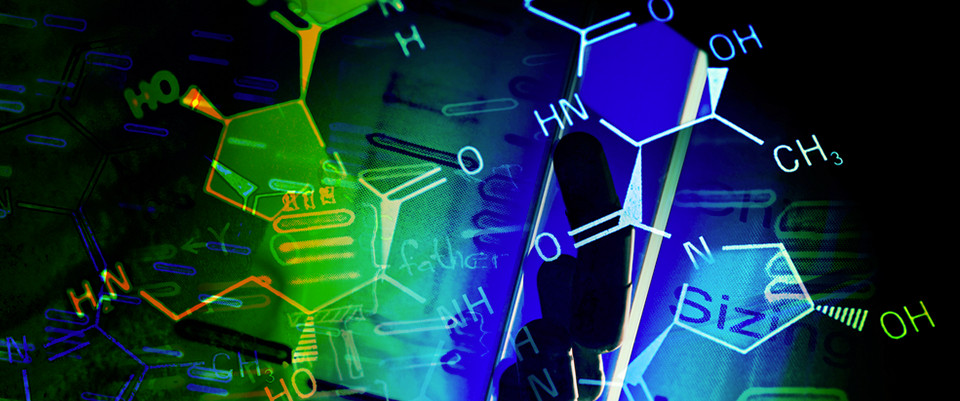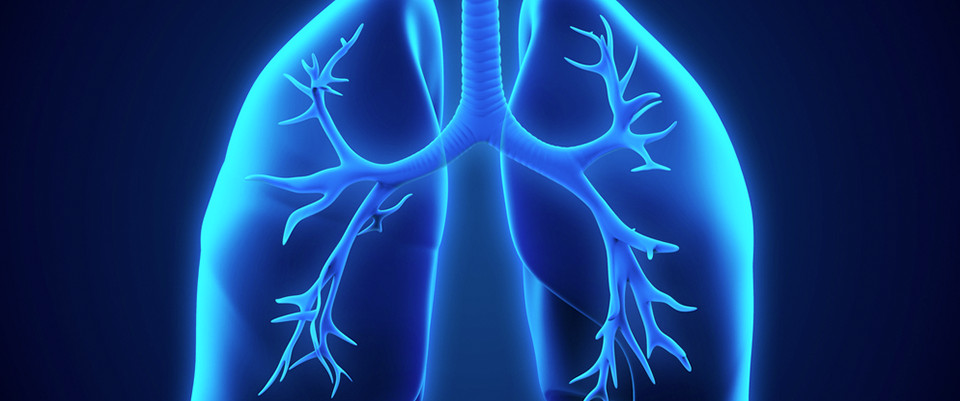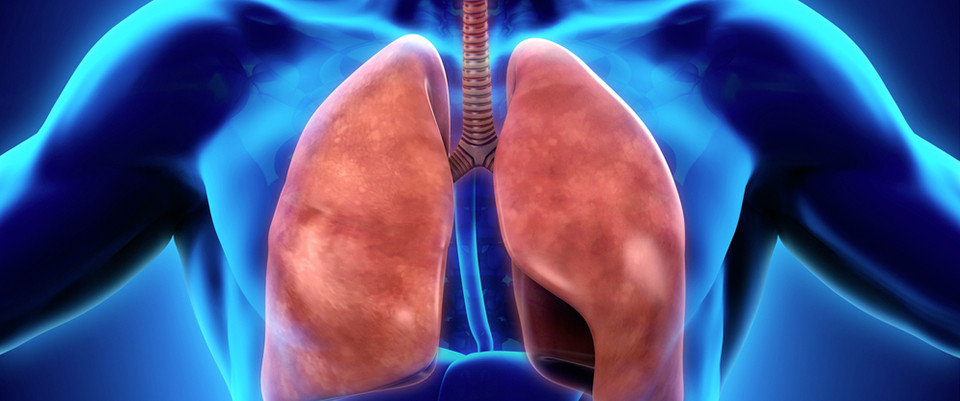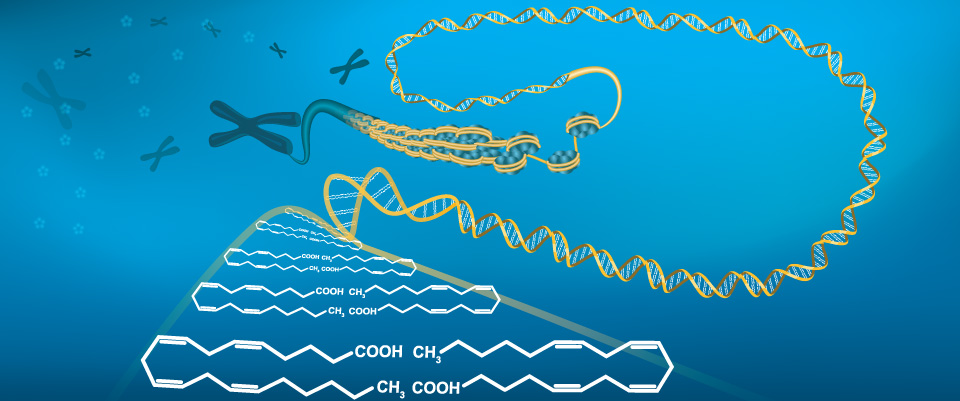PubMed
Genomic and metabolic analysis of fluoranthene degradation pathway in Celeribacter indicus P73T.
Related Articles
Genomic and metabolic analysis of fluoranthene degradation pathway in Celeribacter indicus P73T.
Sci Rep. 2015;5:7741
Authors: Cao J, Lai Q, Yuan J, Shao Z
Abstract
Celeribacter indicus P73(T), isolated from deep-sea sediment from the Indian Ocean, is capable of degrading a wide range of polycyclic aromatic hydrocarbons (PAHs) and is the first fluoranthene-degrading bacterium within the family Rhodobacteraceae. Here, the complete genome sequence of strain P73(T) is presented and analyzed. Besides a 4.5-Mb circular chromosome, strain P73(T) carries five plasmids, and encodes 4827 predicted protein-coding sequences. One hundred and thirty-eight genes, including 14 dioxygenase genes, were predicted to be involved in the degradation of aromatic compounds, and most of these genes are clustered in four regions. P73_0346 is the first fluoranthene 7,8-dioxygenase to be discovered and the first fluoranthene dioxygenase within the toluene/biphenyl family. The degradative genes in regions B and D in P73(T) are absent in Celeribacter baekdonensis B30, which cannot degrade PAHs. Four intermediate metabolites [acenaphthylene-1(2H)-one, acenaphthenequinone, 1,2-dihydroxyacenaphthylene, and 1,8-naphthalic anhydride] of fluoranthene degradation by strain P73(T) were detected as the main intermediates, indicating that the degradation of fluoranthene in P73(T) was initiated by dioxygenation at the C-7,8 positions. Based on the genomic and metabolitic results, we propose a C-7,8 dioxygenation pathway in which fluoranthene is mineralized to TCA cycle intermediates.
PMID: 25582347 [PubMed - indexed for MEDLINE]
Algal omics: unlocking bioproduct diversity in algae cell factories.
Related Articles
Algal omics: unlocking bioproduct diversity in algae cell factories.
Photosynth Res. 2015 Mar;123(3):255-63
Authors: Guarnieri MT, Pienkos PT
Abstract
Rapid advances in "omic" technologies are helping to unlock the full potential of microalgae as multi-use feedstocks, with utility in an array of industrial biotechnology, biofuel, and biomedical applications. In turn, algae are emerging as highly attractive candidates for development as microbial cell factories. In this review, we examine the wide array of potential algal bioproducts, with a focus upon the role of omic technologies in driving bioproduct discovery and optimization in microalgal systems.
PMID: 24627032 [PubMed - indexed for MEDLINE]
metabolomics; +19 new citations
19 new pubmed citations were retrieved for your search.
Click on the search hyperlink below to display the complete search results:
metabolomics
These pubmed results were generated on 2015/10/20PubMed comprises more than 24 million citations for biomedical literature from MEDLINE, life science journals, and online books.
Citations may include links to full-text content from PubMed Central and publisher web sites.
Blood, urine and faecal metabolite profiles in the study of adult renal disease.
Related Articles
Blood, urine and faecal metabolite profiles in the study of adult renal disease.
Arch Biochem Biophys. 2015 Oct 14;
Authors: Barrios C, Spector TD, Menni C
Abstract
Chronic kidney disease (CKD) is a major public health burden and to date traditional biomarkers of renal function (such as serum creatinine and cystatin C) are unable to identify at-risk individuals before the disease process is well under way. To help preventive strategies and maximize the potential for effective interventions, it is important to characterise the molecular changes that take place in the development of renal damage. Metabolomics is a promising tool to identify markers of renal disease since the kidneys are involved in the handling of major biochemical classes of metabolites. These metabolite levels capture a snap-shot of the metabolic profile of the individual, allowing for the potential identification of early biomarkers, and the monitoring of real-time kidney function. In this review, we describe the current status of the identification of blood/urine/faecal metabolic biomarkers in different entities of kidney diseases including: acute kidney injury, chronic kidney disease, renal transplant, diabetic nephropathy and other disorders.
PMID: 26476344 [PubMed - as supplied by publisher]
Phenotypic, metabolic, and molecular genetic characterization of six patients with congenital adrenal hyperplasia caused by novel mutations in the CYP11B1 gene.
Related Articles
Phenotypic, metabolic, and molecular genetic characterization of six patients with congenital adrenal hyperplasia caused by novel mutations in the CYP11B1 gene.
J Steroid Biochem Mol Biol. 2015 Oct 14;
Authors: Nguyen HH, Eiden-Plach A, Hannemann F, Malunowicz EM, Hartmann MF, Wudy SA, Bernhardt R
Abstract
Congenital adrenal hyperplasia (CAH) is an autosomal recessive inherited disorder of steroidogenesis. Steroid 11β-hydroxylase deficiency (11β-OHD) due to mutations in the CYP11B1gene is the second most common form of CAH. In this study, 6 patients suffering from CAH were diagnosed with 11β-OHD using urinary GC-MS steroid metabolomics analysis. The molecular basis of the disorder was investigated by molecular genetic analysis of the CYP11B1 gene, functional characterization of splicing and missense mutations, and analysis of the missense mutations in a computer model of CYP11B1. All patients presented with abnormal clinical signs of hyperandrogenism. Their urinary steroid metabolomes were characterized by excessive excretion rates of metabolites of 11-deoxycortisol as well as metabolites of 11-deoxycorticosterone, and allowed definite diagnosis. Patient 1 carries compound heterozygous mutations consisting of a novel nonsense mutation p.Q102X (c.304C>T) in exon 2 and the known missense mutation p.T318R (c.953C>G) in exon 5. Two siblings (patient 2 and 3) were compound heterozygous carriers of a known splicing mutation c.1200+1G>A in intron 7 and a known missense mutation p.R448H (c.1343G>A) in exon 8. Minigene experiments demonstrated that the c.1200+1G>A mutation caused abnormal pre-mRNA splicing (intron retention). Two further siblings (patient 4 and 5) were compound heterozygous carriers of a novel missense mutation p.R332G (c.994C>G) in exon 6 and the known missense mutation p.R448H (c.1343G>A) in exon 8. A CYP11B1 activity study in COS-1 cells showed that only 11 % of the enzyme activity remained in the variant p.R332G. Patient 6 carried a so far not described homozygous deletion g.2470_5320del of 2850bp corresponding to a loss of the CYP11B1 exons 3 to 8. The breakpoints of the deletion are embedded into two typical 6 base pair repeats (GCTTCT) upstream and downstream of the gene. Experiments analyzing the influence of mutations on splicing and on enzyme function were applied as complementary procedures to genotyping and provided a rational basis for understanding the clinical phenotype of CAH.
PMID: 26476331 [PubMed - as supplied by publisher]
Possible ecological risk of two pharmaceuticals diclofenac and paracetamol demonstrated on a model plant Lemna minor.
Related Articles
Possible ecological risk of two pharmaceuticals diclofenac and paracetamol demonstrated on a model plant Lemna minor.
J Hazard Mater. 2015 Sep 30;302:351-361
Authors: Kummerová M, Zezulka Š, Babula P, Tříska J
Abstract
Lemna minor is often used in environmental risk assessment and it can be supposed that usually evaluated parameters will be reliable even for assessing the risk of pharmaceuticals. Subtle changes in duckweed plant number, biomass production, and leaf area size induced by 10-day-exposure to diclofenac (DCF) and paracetamol (PCT) (0.1, 10, and 100μg/L), excepting 100μg/L DCF, are in contrast with considerable changes on biochemical and histochemical level. Both drugs caused a decrease in content of photosynthetic pigments (by up to 50%), an increase in non-photochemical quenching (by 65%) and decrease in relative chlorophyll fluorescence decay values (by up to 90% with DCF). Both DCF and especially PCT increased amount of reactive nitrogen and oxygen species in roots. DCF-induced effects included mainly increased lipid peroxidation (by 78%), disturbation in membrane integrity and lowering both oxidoreductase and dehydrogenase activities (by 30%). PCT increased the content of soluble proteins and phenolics. Higher concentrations of both DCF and PCT increased the levels of oxidised ascorbate (by 30%) and oxidised thiols (by up to 84% with DCF). Glutathion-reductase activity was elevated by both pharmaceuticals (nearly by 90%), glutathion-S-transferase activity increased mainly with PCT (by 22%). The early and sensitive indicators of DCF and PCT phytotoxicity stress in duckweed are mainly the changes in biochemical processes, connected with activation of defense mechanisms against oxidative stress.
PMID: 26476323 [PubMed - as supplied by publisher]
Modification of platelet proteins by 4-hydroxynonenal: Potential Mechanisms for inhibition of aggregation and metabolism.
Related Articles
Modification of platelet proteins by 4-hydroxynonenal: Potential Mechanisms for inhibition of aggregation and metabolism.
Free Radic Biol Med. 2015 Oct 14;
Authors: Ravi S, Johnson MS, Chacko BK, Kramer PA, Sawada H, Locy ML, Wilson LS, Barnes S, Marques MB, Darley-Usmar VM
Abstract
Platelet aggregation is an essential response to tissue injury and is associated with activation of pro-oxidant enzymes, such as cyclooxygenase, and is also a highly energetic process. The two central energetic pathways in the cell, glycolysis and mitochondrial oxidative phosphorylation, are susceptible to damage by reactive lipid species. Interestingly, how platelet metabolism is affected by the oxidative stress associated with aggregation is largely unexplored. To address this issue, we examined the response of human platelets to 4-hydroxynonenal (4-HNE), a reactive lipid species which is generated during thrombus formation and during oxidative stress. Elevated plasma 4-HNE has been associated with renal failure, septic shock and cardiopulmonary bypass surgery. In this study, we found that 4-HNE decreased thrombin stimulated platelet aggregation by approximately 60%. The metabolomics analysis demonstrated that underlying our previous observation of a stimulation of platelet energetics by thrombin glycolysis and TCA (Tricarboxylic acid) metabolites were increased. Next, we assessed the effect of both 4-HNE and alkyne HNE (A-HNE) on bioenergetics and targeted metabolomics, and found a stimulatory effect on glycolysis, associated with inhibition of bioenergetic parameters. In the presence of HNE and thrombin glycolysis was further stimulated but the levels of the TCA metabolites were markedly suppressed. Identification of proteins modified by A-HNE followed by click chemistry and mass spectrometry revealed essential targets in platelet activation including proteins involved in metabolism, adhesion, cytoskeletal reorganization, aggregation, vesicular transport, protein folding, antioxidant proteins, and small GTPases. In summary, the biological effects of 4-HNE can be more effectively explained in platelets by the integrated effects of the modification of an electrophile responsive proteome rather than the isolated effects of candidate proteins.
PMID: 26475426 [PubMed - as supplied by publisher]
The gut microbiota modulates host amino acid and glutathione metabolism in mice.
Related Articles
The gut microbiota modulates host amino acid and glutathione metabolism in mice.
Mol Syst Biol. 2015;11(10):834
Authors: Mardinoglu A, Shoaie S, Bergentall M, Ghaffari P, Zhang C, Larsson E, Bäckhed F, Nielsen J
Abstract
The gut microbiota has been proposed as an environmental factor that promotes the progression of metabolic diseases. Here, we investigated how the gut microbiota modulates the global metabolic differences in duodenum, jejunum, ileum, colon, liver, and two white adipose tissue depots obtained from conventionally raised (CONV-R) and germ-free (GF) mice using gene expression data and tissue-specific genome-scale metabolic models (GEMs). We created a generic mouse metabolic reaction (MMR) GEM, reconstructed 28 tissue-specific GEMs based on proteomics data, and manually curated GEMs for small intestine, colon, liver, and adipose tissues. We used these functional models to determine the global metabolic differences between CONV-R and GF mice. Based on gene expression data, we found that the gut microbiota affects the host amino acid (AA) metabolism, which leads to modifications in glutathione metabolism. To validate our predictions, we measured the level of AAs and N-acetylated AAs in the hepatic portal vein of CONV-R and GF mice. Finally, we simulated the metabolic differences between the small intestine of the CONV-R and GF mice accounting for the content of the diet and relative gene expression differences. Our analyses revealed that the gut microbiota influences host amino acid and glutathione metabolism in mice.
PMID: 26475342 [PubMed - as supplied by publisher]
Metabolomic profiling of permethrin-treated Drosophila melanogaster identifies a role for tryptophan catabolism in insecticide survival.
Related Articles
Metabolomic profiling of permethrin-treated Drosophila melanogaster identifies a role for tryptophan catabolism in insecticide survival.
Insect Biochem Mol Biol. 2015 Oct 13;
Authors: Brinzer RA, Henderson L, Marchiondo AA, Woods DJ, Davies SA, Dow JA
Abstract
Insecticides and associated synergists are rapidly losing efficacy in target insect pest populations making the discovery of alternatives a priority. To discover novel targets for permethrin synergists, metabolomics was performed on permethrin-treated Drosophila melanogaster. Changes were observed in several metabolic pathways including those for amino acids, glycogen, glycolysis, energy, nitrogen, NAD(+), purine, pyrimidine, lipids and carnitine. Markers for acidosis, ammonia stress, oxidative stress and detoxification responses were also observed. Many of these changes had not been previously characterized after permethrin exposure. From the altered pathways, tryptophan catabolism was selected for further investigation. The knockdown of some tryptophan catabolism genes (vermilion, cinnabar and CG6950) in the whole fly and in specific tissues including fat body, midgut and Malpighian tubules using targeted RNAi resulted in altered survival phenotypes against acute topical permethrin exposure. The knockdown of vermilion, cinnabar and CG6950 in the whole fly also altered survival phenotypes against chronic oral permethrin, fenvalerate, DDT, chlorpyriphos and hydramethylnon exposure. Thus tryptophan catabolism has a previously uncharacterized role in defence against insecticides, and shows that metabolomics is a powerful tool for target identification in pesticide research.
PMID: 26474926 [PubMed - as supplied by publisher]
Evaluation and identification of dioxin exposure biomarkers in human urine by high-resolution metabolomics, multivariate analysis and in vitro synthesis.
Related Articles
Evaluation and identification of dioxin exposure biomarkers in human urine by high-resolution metabolomics, multivariate analysis and in vitro synthesis.
Toxicol Lett. 2015 Oct 13;
Authors: Jeanneret F, Tonoli D, Hochstrasser D, Saurat JH, Sorg O, Boccard J, Rudaz S
Abstract
A previous high-resolution metabolomic study pointed out a dysregulation of urinary steroids and bile acids in human cases of acute dioxin exposure. A subset of 24 compounds was highlighted as putative biomarkers. The aim of the current study was i) to evaluate the 24 biomarkers in an independent human cohort exposed to dioxins released from the incineration fumes of a municipal waste incinerator and; ii) to identify them by comparison with authentic chemical standards and biosynthesised products obtained with in vitro metabolic reactions. An orthogonal projection to latent structures discriminant analysis built on biomarker profiles measured in the intoxicated cohort and the controls separated both groups with reported values of 93.8%; 100% and 87.5% for global accuracy; sensitivity and specificity; respectively. These results corroborated the 24 compounds as exposure biomarkers; but a definite identification was necessary for a better understanding of dioxin toxicity. Dehydroepiandrosterone 3β-sulfate, androsterone 3α-glucuronide, androsterone 3α-sulfate, pregnanediol 3α-glucuronide and 11-ketoetiocholanolone 3α-glucuronide were identified by authentic standards. Metabolic reactions characterised four biomarkers: glucuronide conjugates of 11β-hydroxyandrosterone; glycochenodeoxycholic acid and glycocholic acid produced in human liver microsomes and glycoursodeoxycholic acid sulfate generated in cytosol fraction. The combination of metabolomics by high-resolution mass spectrometry with in vitro metabolic syntheses confirmed a perturbed profile of steroids and bile acids in human cases of dioxin exposure.
PMID: 26474838 [PubMed - as supplied by publisher]
iSCHRUNK - In Silico Approach to Characterization and Reduction of Uncertainty in the Kinetic Models of Genome-scale Metabolic Networks.
Related Articles
iSCHRUNK - In Silico Approach to Characterization and Reduction of Uncertainty in the Kinetic Models of Genome-scale Metabolic Networks.
Metab Eng. 2015 Oct 14;
Authors: Andreozzi S, Miskovic L, Hatzimanikatis V
Abstract
Accurate determination of physiological states of cellular metabolism requires detailed information about metabolic fluxes, metabolite concentrations and distribution of enzyme states. Integration of fluxomics and metabolomics data, and thermodynamics-based metabolic flux analysis contribute to improved understanding of steady-state properties of metabolism. However, knowledge about kinetics and enzyme activities though essential for quantitative understanding of metabolic dynamics remains scarce and involves uncertainty. Here, we present a computational methodology that allow us to determine and quantify the kinetic parameters that correspond to a certain physiology as it is described by a given metabolic flux profile and a given metabolite concentration vector. Though we initially determine kinetic parameters that involve a high degree of uncertainty, through the use of kinetic modeling and machine learning principles we are able to obtain more accurate ranges of kinetic parameters, and hence we are able to reduce the uncertainty in the model analysis. We computed the distribution of kinetic parameters for glucose-fed E. coli producing 1,4-butanediol and we discovered that the observed physiological state corresponds to a narrow range of kinetic parameters of only a few enzymes, whereas the kinetic parameters of other enzymes can vary widely. Furthermore, this analysis suggests which are the enzymes that should be manipulated in order to engineer the reference state of the cell in a desired way. The proposed approach also sets up the foundations of a novel type of approaches for efficient, non-asymptotic, uniform sampling of solution spaces.
PMID: 26474788 [PubMed - as supplied by publisher]
Decreased Plasma Histidine Level Predicts Risk of Relapse in Patients with Ulcerative Colitis in Remission.
Decreased Plasma Histidine Level Predicts Risk of Relapse in Patients with Ulcerative Colitis in Remission.
PLoS One. 2015;10(10):e0140716
Authors: Hisamatsu T, Ono N, Imaizumi A, Mori M, Suzuki H, Uo M, Hashimoto M, Naganuma M, Matsuoka K, Mizuno S, Kitazume MT, Yajima T, Ogata H, Iwao Y, Hibi T, Kanai T
Abstract
Ulcerative colitis (UC) is characterized by chronic intestinal inflammation. Patients with UC have repeated remission and relapse. Clinical biomarkers that can predict relapse in UC patients in remission have not been identified. To facilitate the prediction of relapse of UC, we investigated the potential of novel multivariate indexes using statistical modeling of plasma free amino acid (PFAA) concentrations. We measured fasting PFAA concentrations in 369 UC patients in clinical remission, and 355 were observed prospectively for up to 1 year. Relapse rate within 1 year was 23% (82 of 355 patients). The age- and gender-adjusted hazard ratio for the lowest quartile compared with the highest quartile of plasma histidine concentration was 2.55 (95% confidence interval: 1.41-4.62; p = 0.0020 (log-rank), p for trend = 0.0005). We demonstrated that plasma amino acid profiles in UC patients in clinical remission can predict the risk of relapse within 1 year. Decreased histidine level in PFAAs was associated with increased risk of relapse. Metabolomics could be promising for the establishment of a non-invasive predictive marker in inflammatory bowel disease.
PMID: 26474176 [PubMed - as supplied by publisher]
Mitochondrial Phosphoenolpyruvate Carboxykinase Regulates Metabolic Adaptation and Enables Glucose-Independent Tumor Growth.
Mitochondrial Phosphoenolpyruvate Carboxykinase Regulates Metabolic Adaptation and Enables Glucose-Independent Tumor Growth.
Mol Cell. 2015 Oct 15;60(2):195-207
Authors: Vincent EE, Sergushichev A, Griss T, Gingras MC, Samborska B, Ntimbane T, Coelho PP, Blagih J, Raissi TC, Choinière L, Bridon G, Loginicheva E, Flynn BR, Thomas EC, Tavaré JM, Avizonis D, Pause A, Elder DJ, Artyomov MN, Jones RG
Abstract
Cancer cells adapt metabolically to proliferate under nutrient limitation. Here we used combined transcriptional-metabolomic network analysis to identify metabolic pathways that support glucose-independent tumor cell proliferation. We found that glucose deprivation stimulated re-wiring of the tricarboxylic acid (TCA) cycle and early steps of gluconeogenesis to promote glucose-independent cell proliferation. Glucose limitation promoted the production of phosphoenolpyruvate (PEP) from glutamine via the activity of mitochondrial PEP-carboxykinase (PCK2). Under these conditions, glutamine-derived PEP was used to fuel biosynthetic pathways normally sustained by glucose, including serine and purine biosynthesis. PCK2 expression was required to maintain tumor cell proliferation under limited-glucose conditions in vitro and tumor growth in vivo. Elevated PCK2 expression is observed in several human tumor types and enriched in tumor tissue from non-small-cell lung cancer (NSCLC) patients. Our results define a role for PCK2 in cancer cell metabolic reprogramming that promotes glucose-independent cell growth and metabolic stress resistance in human tumors.
PMID: 26474064 [PubMed - as supplied by publisher]
A direct ionization mass spectrometry-based approach for differentiation of medicinal Ephedra species.
A direct ionization mass spectrometry-based approach for differentiation of medicinal Ephedra species.
J Pharm Biomed Anal. 2015 Oct 3;117:492-498
Authors: Xin GZ, Hu B, Shi ZQ, Zheng JY, Wang L, Chang WQ, Li P, Yao Z, Liu LF
Abstract
Herein, rapid and efficient identification of species of medicinal Ephedrae Herba was performed using DI-MS (direct ionization-mass spectrometry)-based metabolomics analysis. As a direct ionization technique, DI-MS can provide rapid analysis of samples without sample preparation, so it has been advantageously applied to high-throughput metabolomics analysis. In this flow chart, the MS fingerprints of Ephedrae Herba samples obtained by DI-MS method were firstly pretreated by background subtracts, smooth and center procedures to extract MS features. Then, these MS features were aligned using in a house program written in MATLAB to produce MS dataset. After that, PCA and PLS-DA analysis were performed based on the obtained MS dataset. Finally, the parameter VIP (Variable importance in the Projection) was employed to screen the valuable MS features for discrimination. Using such an approach, three medicinal species of Ephedrae Herba, Ephedra sinica, Ephedra intermedia, and Ephedra equisetina., had been successfully differentiated. Additionally, this method has also been applied to identify the changes in components of Ephedrae Herba after honey treated. In present study, DI-MS in combination with metabolomics was shown to be an efficient and accurate way to identify the sources of herbs.
PMID: 26473988 [PubMed - as supplied by publisher]
Effects of ceftiofur treatment on the susceptibility of commensal porcine E.coli - comparison between treated and untreated animals housed in the same stable.
Effects of ceftiofur treatment on the susceptibility of commensal porcine E.coli - comparison between treated and untreated animals housed in the same stable.
BMC Vet Res. 2015;11(1):265
Authors: Beyer A, Baumann S, Scherz G, Stahl J, von Bergen M, Friese A, Roesler U, Kietzmann M, Honscha W
Abstract
BACKGROUND: Healthy farm animals have been found to act as a reservoir of extended-spectrum β-lactamase (ESBL)-producing Escherichia coli (E. coli). Therefore, the objective of the study was to determine the input of antimicrobial active ceftiofur metabolites in the stable via faeces and urine after intramuscular administration of the drug to pigs and the elucidation of the Escherichia coli ESBL resistance pattern of treated and untreated pigs housed in the same barn during therapy.
METHODS: For determination of the minimal inhibitory concentration (MIC) the method of microdilutionaccording to the recommended procedure of the Clinical and Laboratory Standards Institute was used. Inaddition to that, a qualitative determination was performed by agar dilution. Unsusceptible E. coli speciesselected via agar dilution with cefotaxime were confirmed by MALDI-TOF and ESBL encoding genes wereidentified by PCR. The amounts of ceftiofur measured as desfuroylceftiofur (DFC) in the different probes (plasma, urine, faeces and dust) were analysed by UPLC-MS/MS.
RESULTS: In a first experiment two groups of pigs (6 animals per group) were housed in the same barn in two separated boxes. One group (group B) were treated with ceftiofur according to the licence (3 mg/kg administered intramuscularly (i.m.) on three consecutive days, day 1-3). During a second treatment period (day 29-31) an increased rate of ESBL resistant E. coli was detectable in these treated pigs and in the air of the stable. Moreover, the second group of animals (group A) formerly untreated but housed for the whole period in the same stable as the treated animals revealed increased resistance rates during their first treatment (day 45-47) with ceftiofur. In order to investigate the environmental input of ceftiofur during therapy and to simulate oral uptake of ceftiofur residues from the air of the stable a second set of experiments were performed. Pigs (6 animals) were treated with an interval of 2 weeks for 3 days with different doses of ceftiofur (3 mg/kg, 1 mg/kg and 0.3 mg/kg i.m.) as well as with 3 mg/kg per os) and the renal and biliary excretion of ceftiofur as its active metabolite were measured in comparison to the plasma levels. In addition to that, probes of the sedimentation dust and the air of the stable were analysed for drug residues.
CONCLUSION: The present study shows that treatment of several animals in a stable with ceftiofur influences the resistance pattern of intestinal Escherichia coli of the treated as well as untreated animals housed in the same stable. During therapy with the drug which was administered by injection according to the licence we detected nameable amounts of ceftiofur and its active metabolites in the dust and air of the stable.
PMID: 26472561 [PubMed - in process]
Physiological conditions can be reflected in human urine proteome and metabolome.
Physiological conditions can be reflected in human urine proteome and metabolome.
Expert Rev Proteomics. 2015 Oct 15;:1-14
Authors: Wu J, Gao Y
Abstract
Biomarkers are the measurable changes associated with physiological or pathophysiological processes. Urine, unlike blood, lacks mechanisms for maintaining homeostasis: it is therefore an ideal source of biomarkers that can reflect systemic changes. Urinary proteome and metabolome have been studied for their diagnostic capabilities, ability to monitor disease and prognostic utility. In this review, the effects of common physiological conditions such as gender, age, diet, daily rhythms, exercise, hormone status, lifestyle and extreme environments on human urine are discussed. These effects should be considered when biomarker studies of diseases are conducted. More importantly, if physiological changes can be reflected in urine, we have reason to expect that urine will become widely used to detect small and early changes in pathological and/or pharmacological conditions.
PMID: 26472227 [PubMed - as supplied by publisher]
Analysis of urinary metabolomic profiling for unstable angina pectoris disease based on nuclear magnetic resonance spectroscopy.
Analysis of urinary metabolomic profiling for unstable angina pectoris disease based on nuclear magnetic resonance spectroscopy.
Mol Biosyst. 2015 Oct 16;
Authors: Li Z, Liu X, Wang J, Gao J, Guo S, Gao K, Man H, Wang Y, Chen J, Wang W
Abstract
(1)H NMR-based urinary metabolic profiling is used for investigating the unstable angina pectoris (UAP) metabolic signatures, in order to find out candidate biomarkers to facilitate medical diagnosis. In this work, 27 urine samples from UAP patients and 20 healthy controls were used. The metabolic profiles of the samples were analyzed by multivariate statistics analysis, including PCA, PLS-DA and OPLS-DA. The PCA analysis exhibited slight separation with R(2)X of 0.681 and Q(2) of 0.251, while the PLS-DA (R(2)X = 0.121, R(2)Y = 0.931, and Q(2) = 0.661) and the OPLS-DA (R(2)X = 0.121, R(2)Y = 0.931, Q(2) = 0.653) demonstrated that the model showed good performance. By OPLS-DA, 20 metabolites were identified. A diagnostic model was further constructed using the receiver-operator characteristic (ROC) curves (AUC = 0.953), which exhibited a satisfying sensitivity of 92.6%, specificity of 90% and accuracy of 89.1%. The results demonstrated that the NMR-based metabolomics approach showed good performance in identifying diagnostic urinary biomarkers, providing new insights into the metabolic process related to UAP.
PMID: 26471262 [PubMed - as supplied by publisher]
Metabolic dysfunction is restricted to the sciatic nerve in experimental diabetic neuropathy.
Metabolic dysfunction is restricted to the sciatic nerve in experimental diabetic neuropathy.
Diabetes. 2015 Oct 15;
Authors: Freeman OJ, Unwin RD, Dowsey AW, Begley P, Ali S, Hollywood KA, Rustogi N, Petersen RS, Dunn WB, Cooper GJ, Gardiner NJ
Abstract
High glucose levels in the peripheral nervous system (PNS) have been implicated in the pathogenesis of diabetic neuropathy (DN). However our understanding of the molecular mechanisms which cause the marked distal pathology is incomplete. Here we performed a comprehensive, system-wide analysis of the PNS of a rodent model of DN. We integrated proteomics and metabolomics from the sciatic nerve (SN), the lumbar 4/5 dorsal root ganglia (DRG) and the trigeminal ganglia (TG) of streptozotocin-diabetic and healthy control rats. Even though all tissues showed a dramatic increase in glucose and polyol pathway intermediates in diabetes, there was a striking upregulation of mitochondrial oxidative phosphorylation and perturbation of lipid metabolism in the distal SN that was not present in the corresponding cell bodies of the DRG or the cranial TG. This suggests that the most severe molecular consequences of diabetes in the nervous system present in the SN, the region most affected by neuropathy. Such spatial metabolic dysfunction suggests a failure of energy homeostasis and/or oxidative stress specifically in the distal axon/Schwann cell-rich SN. These data provide a detailed molecular description of the distinct compartmental effects of diabetes on the PNS which could underlie the distal-proximal distribution of pathology.
PMID: 26470786 [PubMed - as supplied by publisher]
Temperament type specific metabolite profiles of the prefrontal cortex and serum in cattle.
Related Articles
Temperament type specific metabolite profiles of the prefrontal cortex and serum in cattle.
PLoS One. 2015;10(4):e0125044
Authors: Brand B, Hadlich F, Brandt B, Schauer N, Graunke KL, Langbein J, Repsilber D, Ponsuksili S, Schwerin M
Abstract
In the past decade the number of studies investigating temperament in farm animals has increased greatly because temperament has been shown not only to affect handling but also reproduction, health and economically important production traits. However, molecular pathways underlying temperament and molecular pathways linking temperament to production traits, health and reproduction have yet to be studied in full detail. Here we report the results of metabolite profiling of the prefrontal cortex and serum of cattle with distinct temperament types that were performed to further explore their molecular divergence in the response to the slaughter procedure and to identify new targets for further research of cattle temperament. By performing an untargeted comprehensive metabolite profiling, 627 and 1097 metabolite features comprising 235 and 328 metabolites could be detected in the prefrontal cortex and serum, respectively. In total, 54 prefrontal cortex and 51 serum metabolite features were indicated to have a high relevance in the classification of temperament types by a sparse partial least square discriminant analysis. A clear discrimination between fearful/neophobic-alert, interested-stressed, subdued/uninterested-calm and outgoing/neophilic-alert temperament types could be observed based on the abundance of the identified relevant prefrontal cortex and serum metabolites. Metabolites with high relevance in the classification of temperament types revealed that the main differences between temperament types in the response to the slaughter procedure were related to the abundance of glycerophospholipids, fatty acyls and sterol lipids. Differences in the abundance of metabolites related to C21 steroid metabolism and oxidative stress indicated that the differences in the metabolite profiles of the four extreme temperament types could be the result of a temperament type specific regulation of molecular pathways that are known to be involved in the stress and fear response.
PMID: 25927228 [PubMed - indexed for MEDLINE]
MitoCeption as a new tool to assess the effects of mesenchymal stem/stromal cell mitochondria on cancer cell metabolism and function.
Related Articles
MitoCeption as a new tool to assess the effects of mesenchymal stem/stromal cell mitochondria on cancer cell metabolism and function.
Sci Rep. 2015;5:9073
Authors: Caicedo A, Fritz V, Brondello JM, Ayala M, Dennemont I, Abdellaoui N, de Fraipont F, Moisan A, Prouteau CA, Boukhaddaoui H, Jorgensen C, Vignais ML
Abstract
Mitochondrial activity is central to tissue homeostasis. Mitochondria dysfunction constitutes a hallmark of many genetic diseases and plays a key role in tumor progression. The essential role of mitochondria, added to their recently documented capacity to transfer from cell to cell, obviously contributes to their current interest. However, determining the proper role of mitochondria in defined biological contexts was hampered by the lack of suitable experimental tools. We designed a protocol (MitoCeption) to directly and quantitatively transfer mitochondria, isolated from cell type A, to recipient cell type B. We validated and quantified the effective mitochondria transfer by imaging, fluorescence-activated cell sorting (FACS) and mitochondrial DNA analysis. We show that the transfer of minute amounts of mesenchymal stem/stromal cell (MSC) mitochondria to cancer cells, a process otherwise occurring naturally in coculture, results in cancer cell enhanced oxidative phosphorylation (OXPHOS) activity and favors cancer cell proliferation and invasion. The MitoCeption technique, which can be applied to different cell systems, will therefore be a method of choice to analyze the metabolic modifications induced by exogenous mitochondria in host cells.
PMID: 25766410 [PubMed - indexed for MEDLINE]











